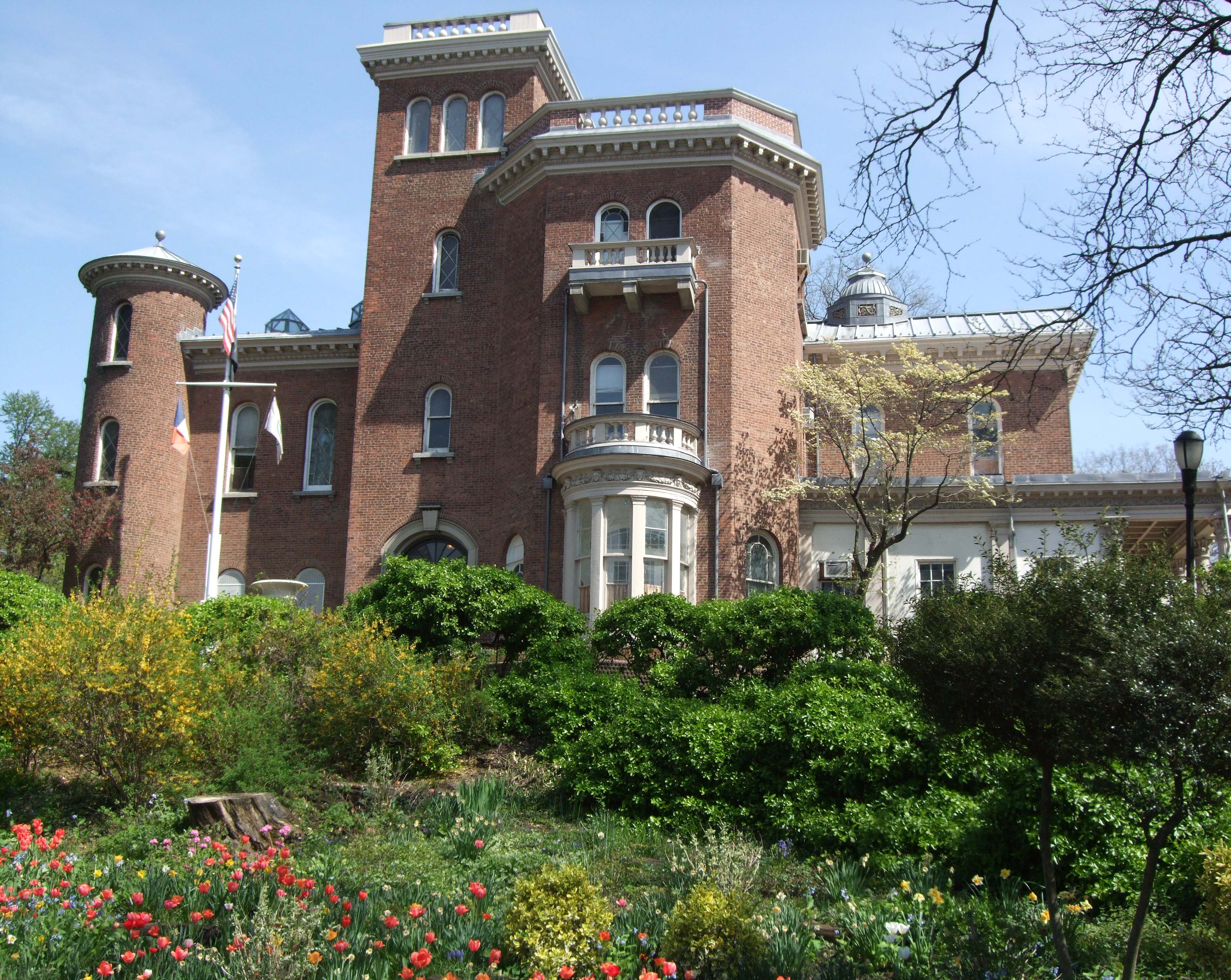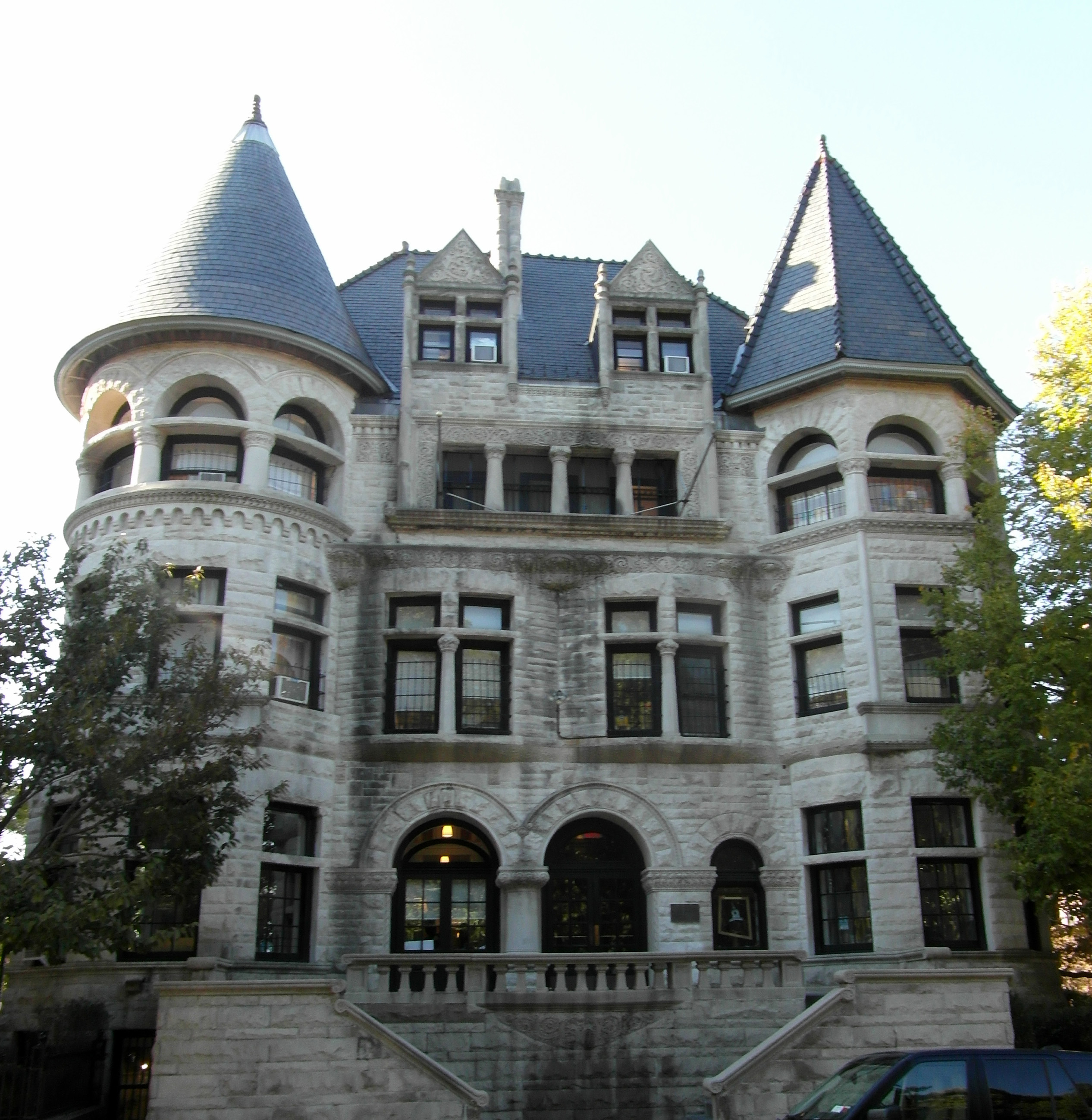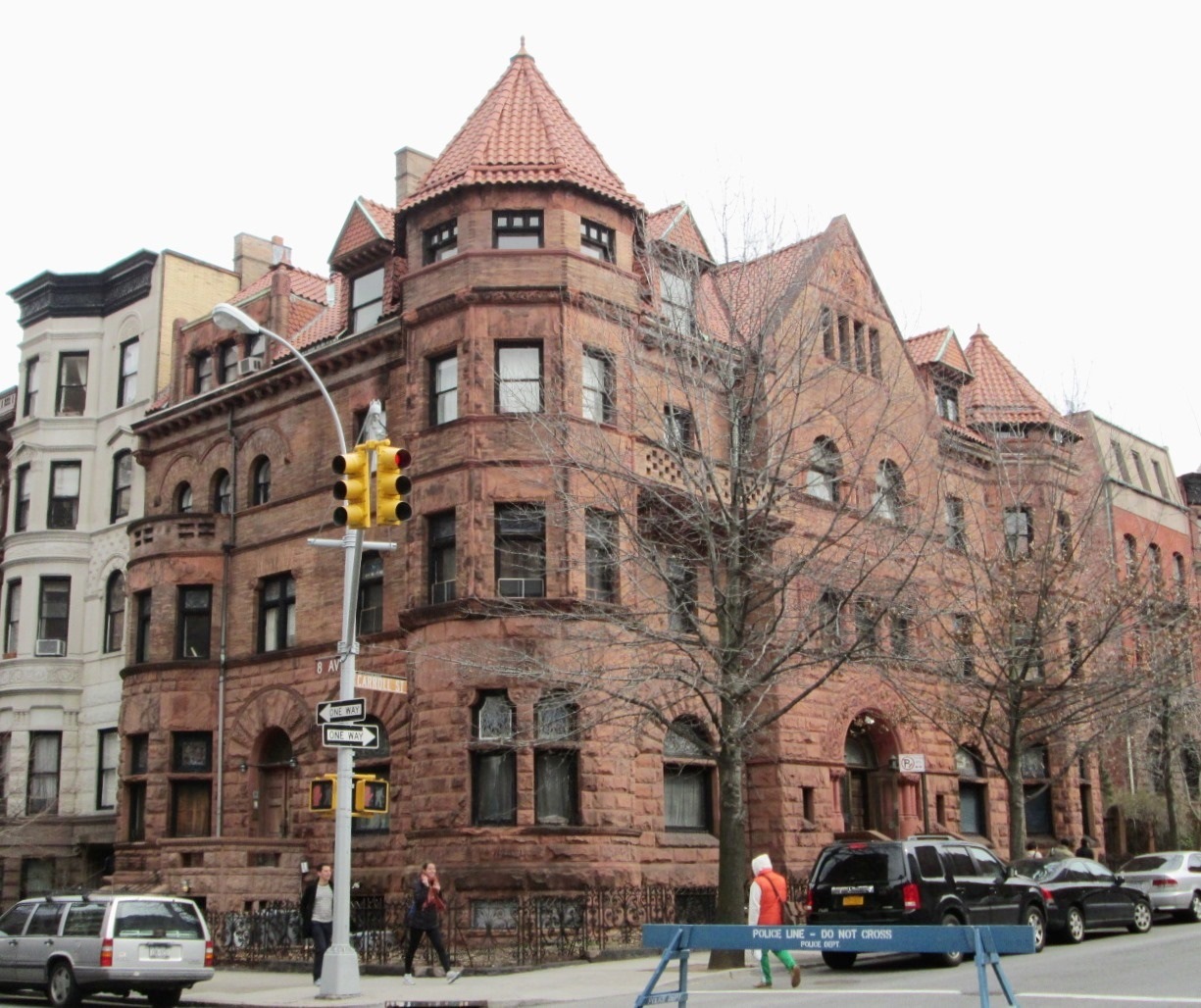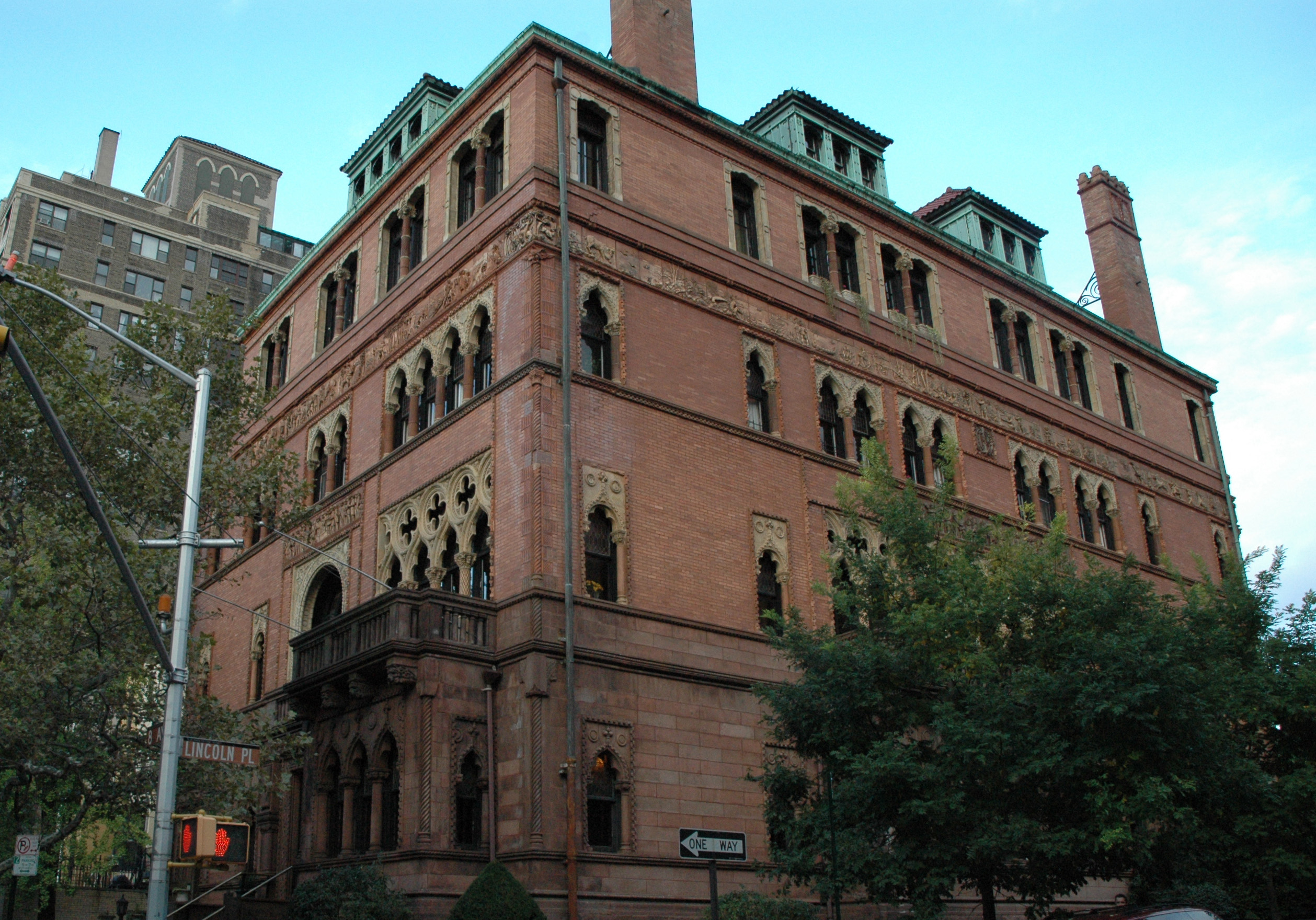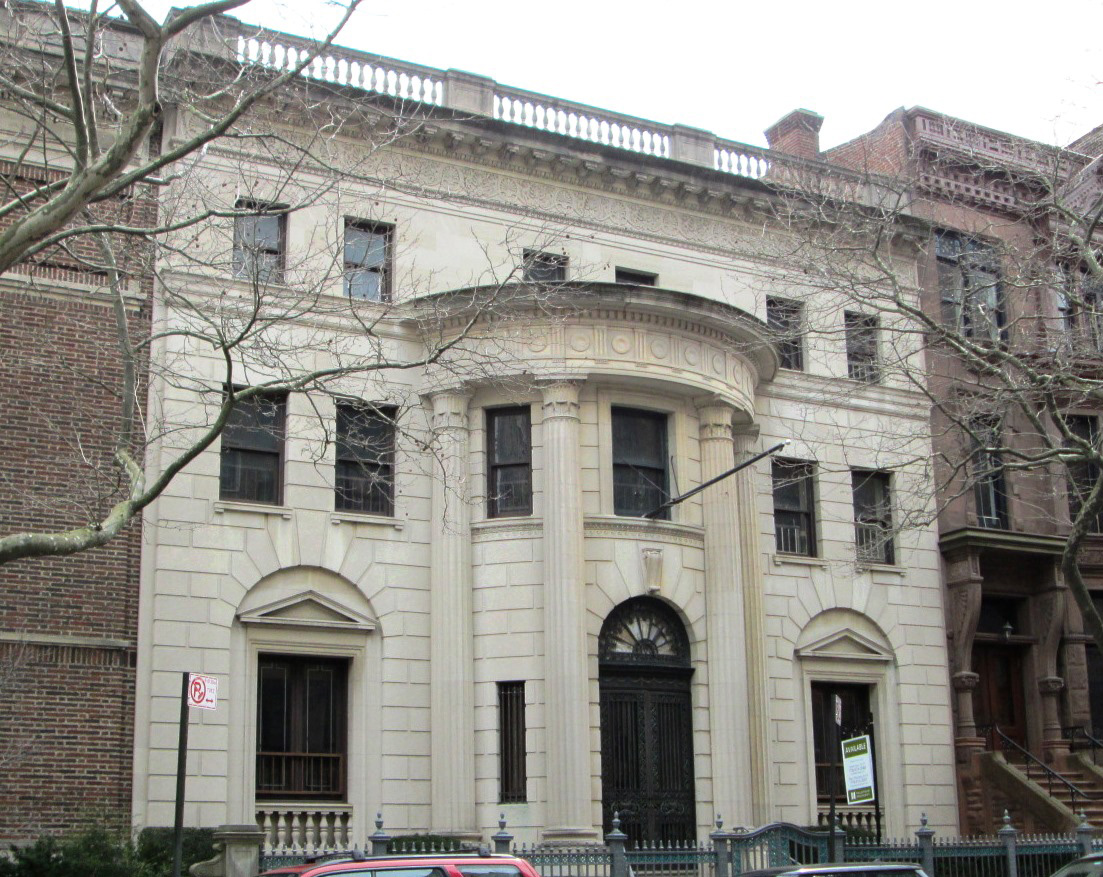Throughout most of the 19th century, Brooklyn was not a borough but rather a city in its own right. Its proximity to Manhattan and its bucolic (by comparison) setting led to its becoming arguably the first-ever commuter suburb and, by 1860, the third-largest city in the country, behind only New York and Philadelphia.
Other parts of Brooklyn, particularly those closer to the bridges and ferries that linked to New York City, were soon dense with tenements. The area that is now Park Slope, though, remained fairly undeveloped, largely due to lawyer and railroad mogul Edwin Clarke Litchfield. Of the nearly 150 acres of Brooklyn that Litchfield acquired throughout the 1850s, more than 60 acres were farmland in Park Slope. He hired acclaimed architect Alexander Jackson Davis to design on this estate an opulent Italianate mansion, complete with towers, columns, and cupolas. Nicknamed Litchfield Villa, it is now the Brooklyn headquarters of New York City Department of Parks and Recreation and of the Prospect Park Alliance.
Litchfield Villa, now headquarters for the Prospect Park Alliance. Image: Kim/Flickr
Litchfield began selling off parts of his holdings to developers throughout the Civil War. Eager to ensure that this particular area of Brooklyn remained desirable for well-to-do residents, community leaders advocated for a public park similar to that of Manhattan’s recently opened Central Park. In 1866 Brooklyn hired Central Park’s designers, Frederick Law Olmsted and Calvert Vaux, to create Prospect Park. The remains of Litchfield’s estate, including his mansion, made up much of the park.
The Henry Hulburt Mansion, now part of Poly Prep. Image: Reading Tom/Flickr
With its lush landscaping, large lake, and grand statues and fountains, Prospect Park did indeed make the neighborhood directly to its west a fashionable address. Prospect Park West was even dubbed the Gold Coast due to the Victorian mansions lining the street. For instance, paper magnate Henry Hulburt commissioned a Romanesque Revival mansion to be built at 49 Prospect Park West, on the corner of First Street. Completed in 1892, the turreted building is now the campus of Poly Prep’s Lower School and was renovated to become the first LEED-certified school building in New York City. The inventor of Bon Ami cleanser, William Childs, commissioned his own elaborate residence just next door. Home to Brooklyn’s largest private garden, this Neo-Jacobean mansion has been owned by the Brooklyn Society for Ethical Culture since 1947.
The so-called Chiclet Mansion. Image: Beyond My Ken/Wikimedia
One block west of Prospect Park West, Eighth Avenue was just as desirable. Chewing-gum entrepreneur Thomas Adams Jr. had a turreted mansion of his own built there, on the corner of Carroll Street, in 1888. Known as the Chiclet Mansion, the four-story Romanesque Revival home boasted all of the era’s status symbols, from an antique oak stairway to embossed leather paneling to electric burglar alarms.
The Montauk Club. Image: The Squirrels/Wikimedia
By 1890 Park Slope was, according to Census figures, the richest community in the entire country. The private Montauk Club had formed a few years earlier to cater these magnates and moguls. Architect Francis H. Kimball took inspiration from a Venetian palazzo when designing the clubhouse at 25 Eighth Avenue, by the Grand Army Plaza—though unlike the clubhouse, the original palazzo did not include a bowling alley. Although several of the building’s five floors have been converted into private residences, the Montauk Club still maintains the first and second floors, where members can dine, enjoy special events, and relax among mahogany woodwork and stained-glass windows—though alas, the bowling alley is no more.
The former Tracy Mansion. Image: Beyond My Ken/Wikimedia
Wealthy homeowners continued to construct mansions in Park Slope into the early 20th century. By the time tugboat titan John Tracy had his 50-foot-wide mansion constructed on Eighth Avenue, in 1912, the neighborhood had peaked in terms of wealth and prestige. The growing popularity of automobiles led movers and shakers to move out even farther from the city, where they could buy even larger properties and construct even more-grandiose abodes.
That said, Park Slope has once again become a hot address for movers and shakers. Writers and actors such as Steve Buscemi, Dave Eggers, Jonathan Safran Foer, Maggie Gyllenhaal, and Patrick Stewart are among those who have lived among the former mansions during the past two decades, helping to give rise to what might be considered a second Gilded Age for the neighborhood.



